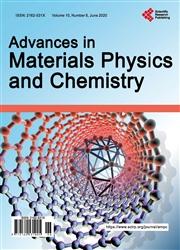Physical Nanoindentation: From Penetration Resistance to Phase-Transition Energies
引用次数: 5
Abstract
-The ISO standard 14577 is challenged for its violation of the energy law, its wrong relation of normal force FN with impression depth h, and for its iterative treatments. The solution of this dilemma is the use of sacrosanct simplest calculation rules for the loading parabola (now FN = kh3/2) giving straight lines for cones, pyramids and wedges. They provide the physical penetration resistance hardness k with dimension [Nm-3/2] and allow for non-iterative calculations with closed formulas, using simple undeniable calculation rules. The physically correct FN versus h3/2 plot is universally valid. It separates out the most common surface effects and reveals gradients. It provides unmatched precision, including reliability checks of experimental data. Regression analysis of FN versus h3/2 plots reveals eventual unsteadiness kink phase-transition onset with the transition-energy. This is shown for all kinds of solid materials, including salts, silicon, organics, polymers, composites, and superalloys. Exothermic and endothermic single and consecutive multiple phase-transitions with their surface dependence are distinguished and the results compared in 5 Tables. The sharp phase-transition onsets and the transition energies provide unprecedented most important materials’ characteristics that are indispensable for safety reasons. ISO ASTM is thus urged to thoroughly revise ISO 14577 and to work out new standards for the mechanically (also thermally) stressed materials. For example, the constancy of the first phase-transition parameters must be controlled, and materials must only be admitted for maximal forces well below the first phase-transition onset. Such onset loads can now be easily calculated. The nevertheless repeated oppositions against the physical analysis of indentations rest on incredibly poor knowledge of basic mathematics, errors that are uncovered. The safety aspects caused by the present unphysical materials’ parameters are discussed.物理纳米压痕:从抗穿透性到相变能
-ISO标准14577因其违反能量定律、法向力FN与压痕深度h的错误关系以及其迭代处理而受到质疑。解决这一难题的方法是使用神圣不可侵犯的最简单计算规则来计算荷载抛物线(现在FN=kh3/2),为锥体、棱锥体和楔体提供直线。它们提供了尺寸为[Nm-3/2]的物理渗透阻力硬度k,并允许使用简单的不可否认的计算规则使用封闭公式进行非迭代计算。物理上正确的FN与h3/2的关系图是普遍有效的。它分离出最常见的表面效果并显示渐变。它提供了无与伦比的精度,包括实验数据的可靠性检查。FN与h3/2曲线的回归分析揭示了最终的不稳定扭结相变随转变能的开始。这适用于各种固体材料,包括盐、硅、有机物、聚合物、复合材料和高温合金。区分了放热和吸热的单相变和连续多相变及其表面依赖性,并在5个表中对结果进行了比较。急剧的相变爆发和转变能量提供了前所未有的最重要的材料特性,这些特性对于安全来说是必不可少的。因此,ISO ASTM被敦促彻底修订ISO 14577,并为机械(也是热)应力材料制定新的标准。例如,必须控制第一相变参数的恒定性,并且材料必须仅在远低于第一相变开始的最大力下才被允许。这样的起始载荷现在可以很容易地计算。然而,对压痕物理分析的反复反对建立在基础数学知识极其贫乏的基础上,这些错误都被发现了。讨论了目前非物理材料参数引起的安全问题。
本文章由计算机程序翻译,如有差异,请以英文原文为准。
求助全文
约1分钟内获得全文
求助全文

 求助内容:
求助内容: 应助结果提醒方式:
应助结果提醒方式:


